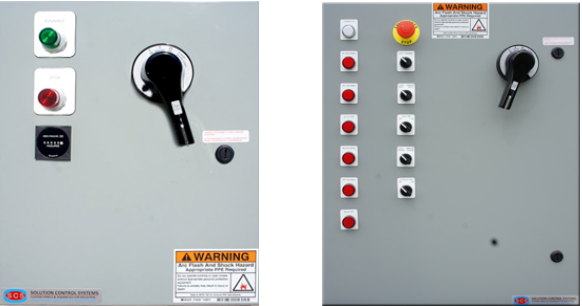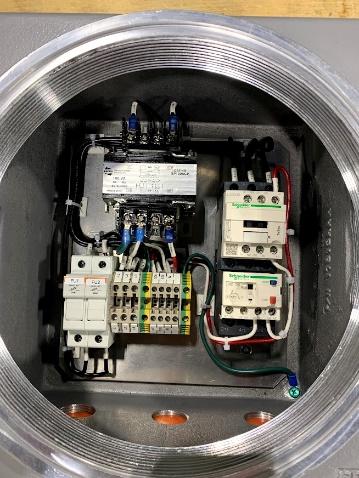Electric motor starters and controllers play a crucial role in many electrical control systems. To assist you in grasping the essentials of motor starters better, we’ve put together this piece.

What is Electric Motor Starter?
To properly start and stop a motor, an electrical component is needed, i.e. starting motor. An electric motor starter acts as a relay, switching the electricity on and off. A starter, unlike a relay, offers overcurrent and low voltage safety. There are four primary purposes of a motor starter:
- Start a vehicle with caution
- Make a safe stop for a car
- Reverse a motor’s rotation
- Ensure that the motor is protected against overheating and overvoltage
Different Types of Motor Starters
Electric motor starters are devices used to safely start and stop electric motors while protecting them from damage. Common types of include Direct-On-Line (DOL) starters, which provide full voltage directly to the motor. Star-Delta starters, which reduce starting current by initially connecting the motor in a star configuration before switching to delta and Soft Starters which gradually ramp up voltage to minimize mechanical stress and electrical surges.
Why We Need a Starter with a Motor?

The frequent inrush from starting across-the-line might overload and harm the motor in applications that need many starts/stops (usually more than four per hour).
Also Read: 6 Considerations for Choosing the Best-Fit Starter Motor Control Technology
It can harm other equipment on the supply line if a considerable quantity of current is drawn from a bigger engine. As a result, a distinct technique is used to start most big motors. On-delay timers or programming of the control system should be used to stagger the commencement of many smaller loads coming on the line simultaneously.
How a Motor Starter Works?
A motor can be started manually or electrically. When using a manual starter, an ON/OFF lever or button must be manually shifted from the ON to the OFF position for the device to start. The power supply may be turned on or off by forming or breaking the connection.
Manual starts have the drawback of automatically resuming operation after a power outage, which might pose a safety risk. However, manual openings do not allow for automated control. Hence industry best practices discourage the usage of manual starters.
The contactor functions similar to a relay in an electro-mechanical starter. An energized coil magnetically pulls in the contacts that complete the circuit to the motor, enabling it to draw electricity. A lower voltage (usually 120V) is used to operate the power circuit, while a higher voltage (commonly 208V or460V) is used to power the system.
Also Read: How Soft starters Regulate Current in Induction Motors
What is the function of a starter motor?
An electric motor starter safely initiates and stops the operation of an electric motor. It controls the power flow, protecting the motor from overloads and electric faults. By regulating the initial inrush current it prevents voltage drops and mechanical stress. Additionally, it offers safety features like short-circuit protection and emergency shut off, ensuring reliable and efficient motor performance.
The importance of motor starters
Motor starters are crucial for the safe and efficient operation of electric motors. They regulate the high inrush current during startup, preventing electrical surges and minimizing mechanical stress on the motor and connected equipment. This extends the motor’s lifespan and reduces maintenance costs. Motor starters also provide essential protection against overloads, short circuits, and phase failures, ensuring safe operation, Additionally, they enable precise control over motor speed and torque, enhancing productivity and energy efficiency.
Conclusion
Electric motor starters play a vital role in ensuring the safe, efficient, and reliable operation of electric motors. By controlling startup currents, providing overload protection, and enabling precise motor control, they enhance equipment longevity and operational safety. Investing in the right motor starter not only protects valuable machinery but also optimizes productivity and energy efficiency, making them indispensable in modern industrial applications.
